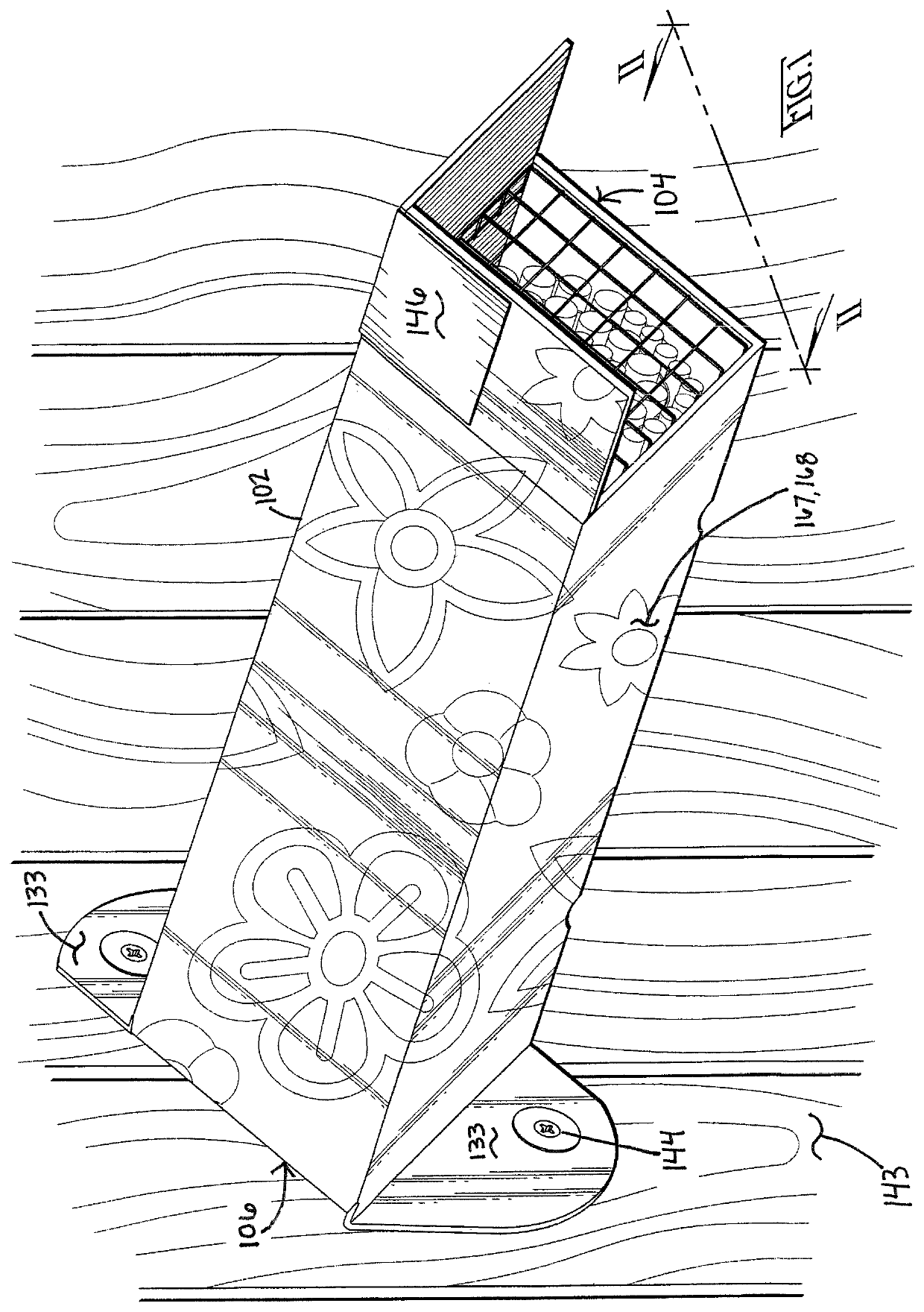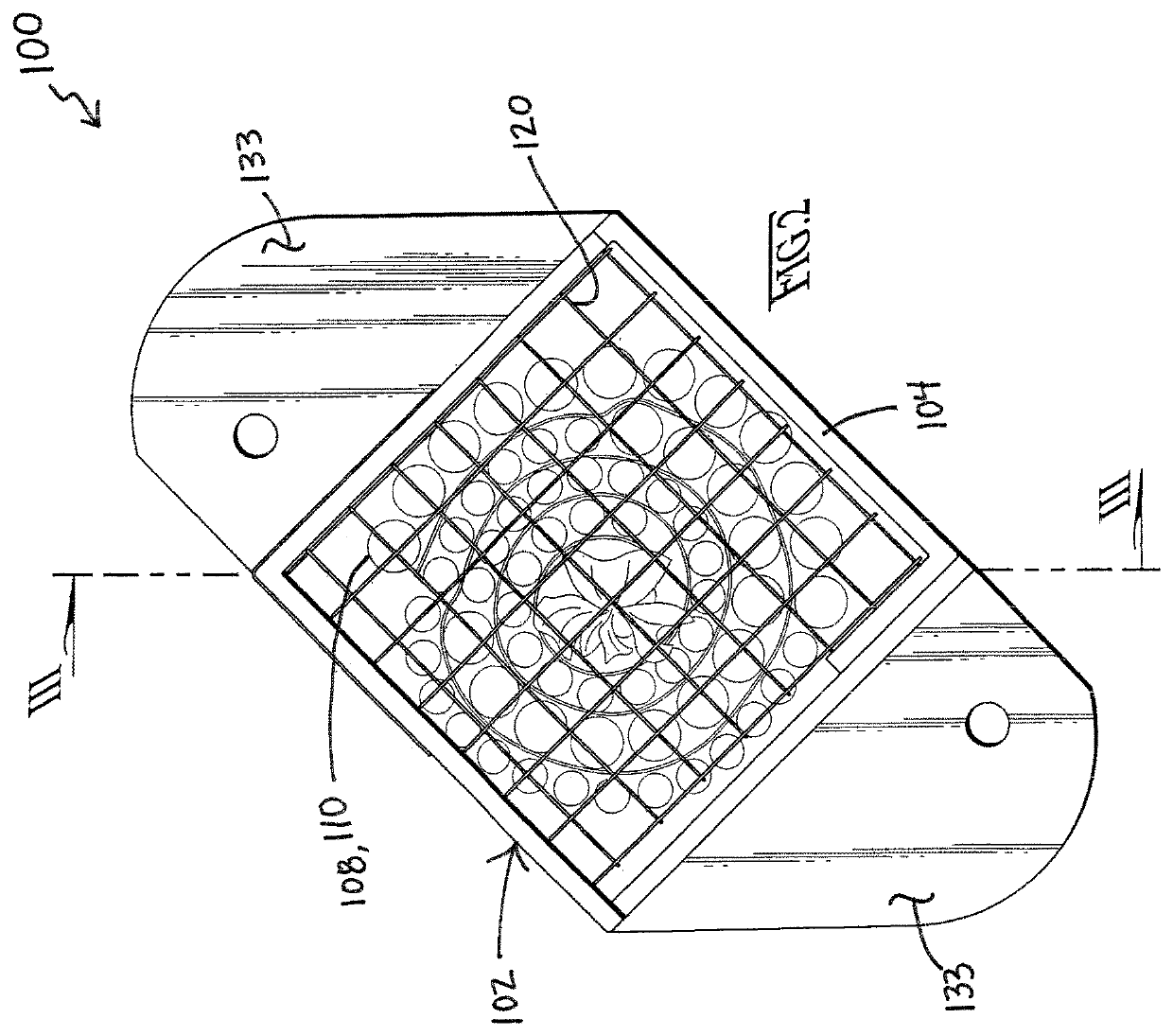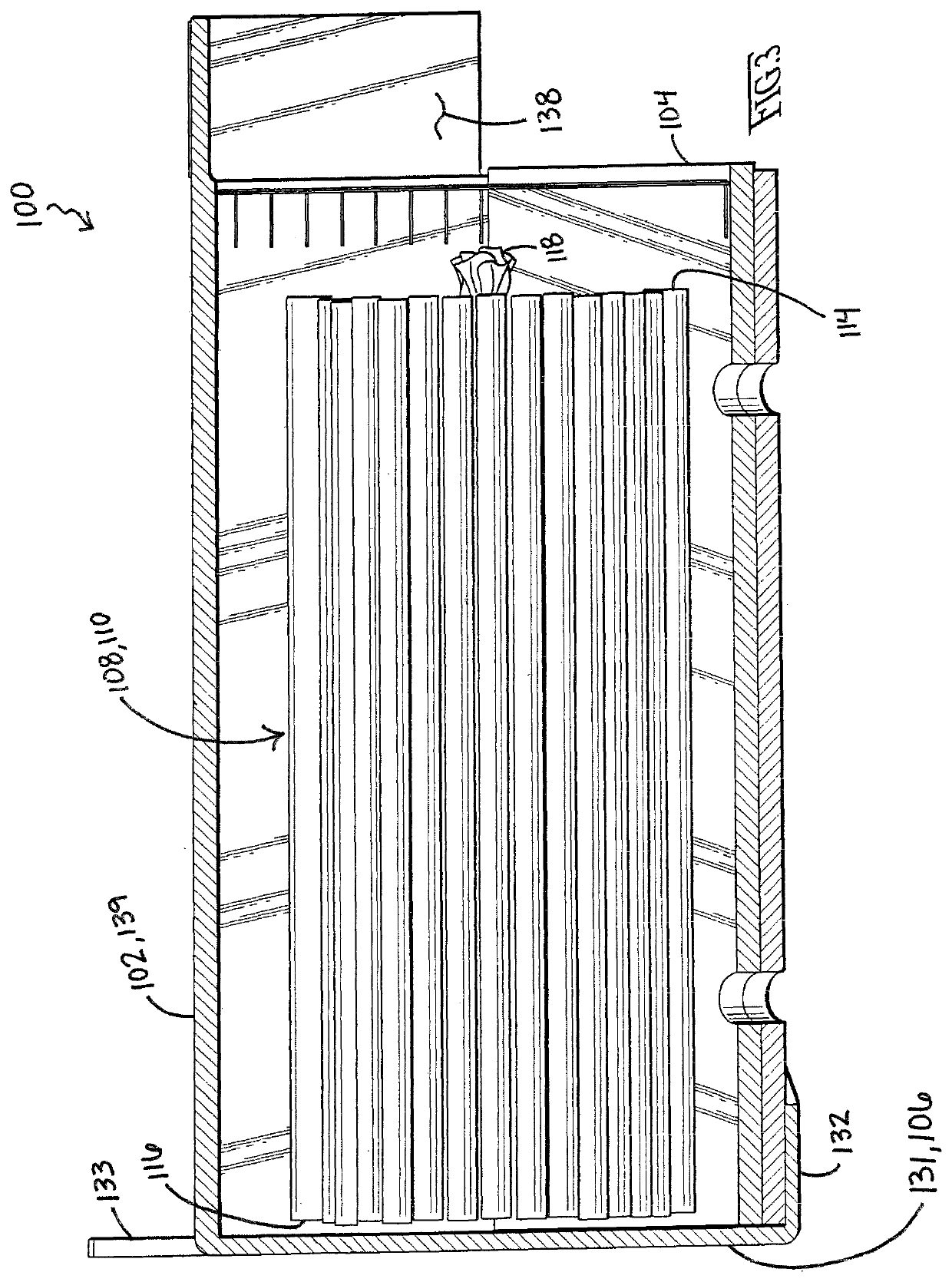Pollinator nursery apparatus and methods
a pollinator and nursery technology, applied in the field of pollinator culture, can solve the problems of affecting the structure and compromising the structural integrity of the nest, and achieve the effect of improving the chances of successful completion of the life cycl
- Summary
- Abstract
- Description
- Claims
- Application Information
AI Technical Summary
Benefits of technology
Problems solved by technology
Method used
Image
Examples
Embodiment Construction
[0039]FIGS. 1 through 7 show a pollinator nursery habitat 100 in accordance with the invention. The pollinator nursery habitat 100 is a single unit or pod having an exterior case 102 of corrugated fiber board (also known by other names including without limitation cardboard). The case 102 is formed into an elongated tunnel that extends between an open end 104 and a closed end 106. This tunnel (receives and) contains a core 108 comprising a multiplicity of elongated small-diameter paper tubes 110 (eg., straws) packed fairly close together. The tubes 110 are open at both ends 112 and 114 but since the back ends 112 of the tubes 110 back up against the closed end 106 of the case 102, the tubes 110 are essentially closed-ended at their back ends 112 proximate the closed end 106 of the case 102. Correspondingly, the tubes 110 are essentially open-ended at their front ends 114 because their front ends 114 face the open end 104 of the case 102.
[0040]The tubes 110 serve as the nest sites fo...
PUM
 Login to View More
Login to View More Abstract
Description
Claims
Application Information
 Login to View More
Login to View More - R&D
- Intellectual Property
- Life Sciences
- Materials
- Tech Scout
- Unparalleled Data Quality
- Higher Quality Content
- 60% Fewer Hallucinations
Browse by: Latest US Patents, China's latest patents, Technical Efficacy Thesaurus, Application Domain, Technology Topic, Popular Technical Reports.
© 2025 PatSnap. All rights reserved.Legal|Privacy policy|Modern Slavery Act Transparency Statement|Sitemap|About US| Contact US: help@patsnap.com



